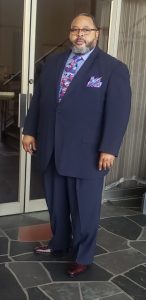
Readers and writers: Young adult novels that will hook adults, too
A teenage girl with a neurodivergent brain loves an octopus and struggles with a hateful teacher. Another teen wonders if she sent the wrong man to prison when she testified against her father for killing her mother. These very different and compelling young adult novels by Mankato authors will be appreciated by adults, too.
(Courtesy of Penguin Random House)
“Rules for Camouflage”: by Kirstin Cronn-Mills (Little Brown, $18.99)
You might also remember that our brains are super great at blowing things out of proportion, and extra super great at enormous emotions. And that the standards society sets aren’t ‘normal,’ they’re just common. Standards can and should change. Society is not a useful measuring stick –– from “Rules for Camouflage”
Evie Chambers and Aretha are best friends who use camouflage for different reasons. Evie is neurodivergent and uses camouflage to blend in at her high school. Unruly brain. Weird brain. Aretha is a Pacific day octopus at the Minnesota Zoo that camouflages when she’s feeling threatened.
Kirstin Cronn-Mills (Chelsea Morning Photography)
This sixth young adult novel by Cronn-Mills is tender and filled with the author’s love for kids who are seen as “different.” Readers will cheer for Evie, who narrates the story of what’s going on in her life. Because of her imaginative brain she was so overwhelmed she skipped her sophomore year at Bluestem Lake Area High School, or BLAH as the kids call it. Her worried mother signed her up to volunteer at the Minnesota Zoo where she met Aretha and fell in love with the smart cephalopod with a quirky personality. Now Evie is a senior but continues to volunteer. She loves the feel of Aretha’s suckers gently holding her arms.
“Octopuses camouflage so well because of skin cells called chromatophores,” Evie explains. “When their brain (which brain? I don’t know) signals those cells, the octopus can change the color of the texture of their skin. The mimic octopus can morph itself to match the shape of other animals to fool its prey…
“Humans, on the other hand, camouflage to cover our awkwardness, our obsessions, our unusual skills, and often our deep desire to be anywhere but a place where others are looking at us. We have to become experts at blending in, at not calling attention to ourselves. Octopuses don’t camouflage out of embarrassment or shame — only to find food or stay safe.”
At school Evie isn’t doing so well. Her biology teacher has a personal dislike for her. When the class is assigned to do reports on vertebrates, Evie wants to do hers on Aretha’s awesomeness. Thanks to her bosses at the zoo, Evie is allowed to do a presentation for the volunteers about Aretha that goes well. But the teacher insists she write about foxes. Then, the hateful woman tells her she is two credits short and won’t graduate.
So Evie retreats to the Lair, a secret safe place in a store room for band instruments where “weirdos” and bullied kids go when they need a time-out. Some take brief naps in storage pods, others read or cry. When one girl is in tears because the most popular guy in the school tries to pull off her hijab, Evie decides to fight the school system that turns a blind eye to bullying and won’t censure her biology teacher who saw what happened and did nothing.
Evie is also having warm feelings for Blue, another neurodivergent zoo volunteer. Their awkward first encounters are gentle and as they begin to trust one another they reveal their medical diagnoses, although the reader isn’t let in on that conversation. It’s as though the author wants to give them privacy.
Cronn-Mills, who writes with authority because she is neurodivergent, teaches English at South Central College in North Mankato. Her first young adult novel, “The Sky Always Hears Me: And the Hills Don’t Mind,” was a 2010 Minnesota Book Award finalist. “Beautiful Music for Ugly Children,” about a transgender youth, won the American Library Association’s Stonewall Award and a silver medal for gay/lesbian/Bi/Trans fiction from Independent Publisher Book Awards.
Cronn-Mills will launch “Rules for Camouflage” at 6 p.m. Thursday, June 20 at the Arts Center of St. Peter, 315 S. Minnesota Ave., St. Peter, Minn.
(Courtesy of the publisher)
“Dead Girls Talking”: by Megan Cooley Peterson (Holiday House, $19.99)
I think more about what Eugenia said… about looking closer at the murders, including my mom’s. It might not be a terrible idea. Instead of being a victim, maybe I could be the girl who stopped a killer. And I can finally prove to myself beyond all doubt, that my father is guilty of his crime. If there’s really a killer loose in Wolf Ridge, then Eugenia is right. None of us is safe — from “Dead Girls Talking”
Megan Cooley Peterson (Courtesy of Red Balloon)
In her second young adult novel (after “The Liar’s Daughter”) Peterson gives us a twisty, sometimes dark story about Bettina, whose father is in prison for stabbing her mother to death and carving her mouth to look like a big smile. Bett was only 6 when it happened and she testified that she saw Trapper, her father, leaving the house the morning she found her mother’s bloody body. That was 10 years before the book begins, and Bett is known by everybody in Wolf Ridge as the girl whose father killed her mother. Bett has been living with her wealthy maternal grandparents, who refuse to discuss their daughter or what happened to her. Then Bett makes friends with Eugenia, a classmate who’s also unpopular because she lives in the local funeral home run by her parents. Eugenia is a no-nonsense girl who presses Bett to take a hard look at her mother’s murder when three more women are killed and Bett discovers the bodies. Who is the person dubbed the Smiley Face Killer? A copycat?
This is a teen procedural, with the girls looking for traces of the killer or killers. They set up a whiteboard in the attic of the funeral home, adding and subtracting names of possible perps that includes one of their cute male classmates. Also in the mix is Bett’s aunt Ada, who has never believed Trapper was guilty of killing his wife and has a website dedicated to the case that made national headlines. And there’s Natalie, Bett’s former best friend, who is looking frail and unwell. Nat’s mother, Lydia, was like a second mother to Bettina but now she runs a “ghost tour” of the town focusing on Bett’s mother’s death. As Bett and Eugenia learn more about the women who were killed, Bett begins to wonder if she remembered correctly what happened the morning of her mother’s death. Was her charming father innocent? Who was the person with “blue hands” she described to the police?
Peterson keeps the suspense going as the plot becomes more involved and Bettina more confused. As the girls dig into police files from a decade earlier, some things don’t add up. Why was Bett’s grandfather, a lawyer, so involved?
Thee’s a teen vibe to this story. Eugenia pulls Bett back from drinking too much one night, and the girls skip their prom to break into the house of someone they suspect. Who else would substitute plain black clothes for tulle and glitter on prom night?
The author has written more than 200 nonfiction books for children on topics ranging from dinosaurs and sharks to urban legends. She will launch “Dead Girls Talking” at 6 p.m. Tuesday, June 18, in conversation with Minnesota Book Award-winner Laura Zimmerman at Red Balloon Bookshop, 891 Grand Ave., St. Paul. Free; registration required. Go to redballoonbookshop.com/events.
Related Articles
Why Maisie Dobbs author Jacqueline Winspear says it’s time to end the series
How Stuart Woods’ character Stone Barrington lives on in Brett Battles’ ‘Smolder’
Real or not real? New ‘Hunger Games’ book, movie prequel will tell Haymitch’s story
Literary calendar: Author celebrates paperback edition with St. Paul bookstore chat
Readers and writers: Dark lessons from the Boundary Waters lead an eclectic mix


